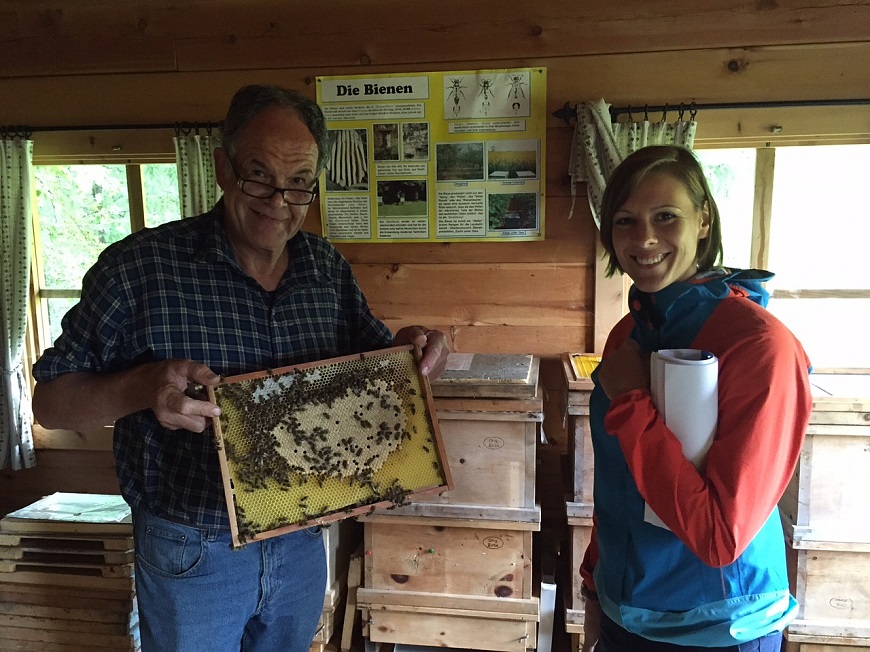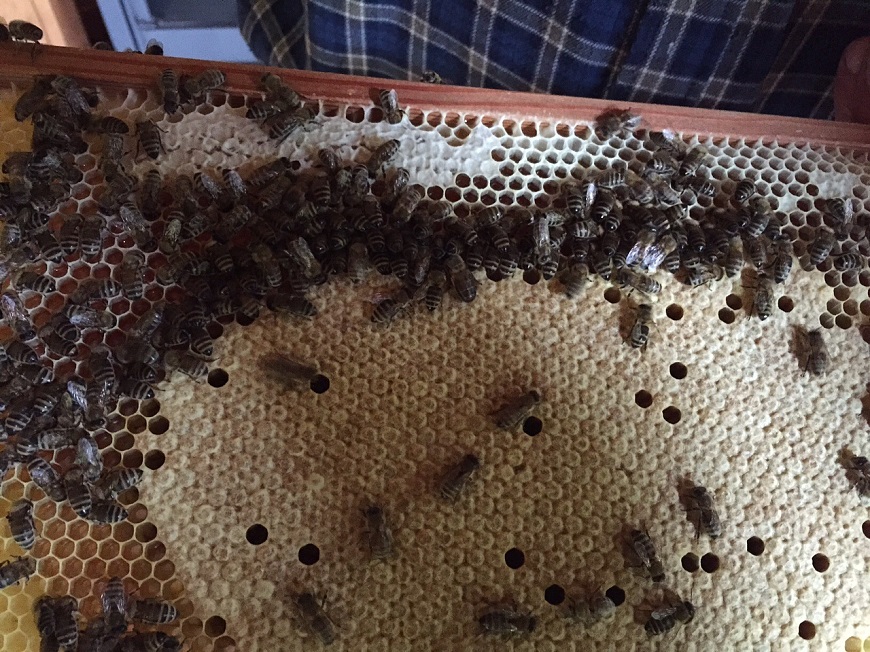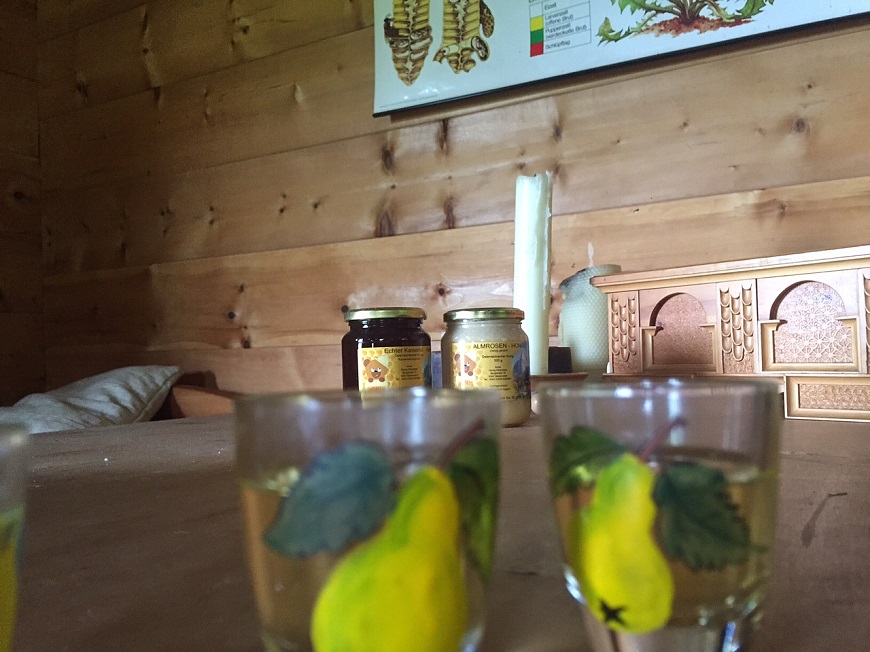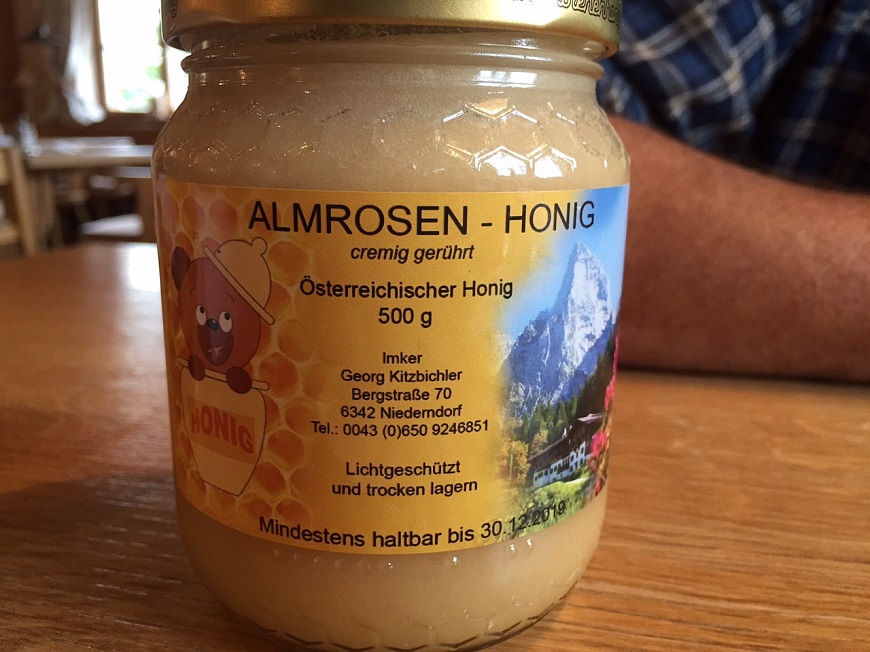Ice stock shooting in Ebbs

Active & nature
by Harald Löffel
Ice stock shooting in Ebbs
It takes 21 days for normal larvae to free itself from its egg, and hatch. Georg explains and demonstrates this at the start of his beehive talk, near Aschinger Alm. In the wax-covered honeycomb they have plenty of time and warmth to develop into strong bees. As soon as they hatch they bite their way out and immediately start working in the hive, which they do for three weeks. During this time they are still weak and pale. They feed themselves on honey, which is stored around the centre of the beehive for them. The queen starts depositing eggs in the centre, and then works her way out in circles. It takes her about 2-3 days to fill the entire inner honeycomb with eggs.

There's a very simple method. One larva gets fed differently; it gets the so-called royal jelly. Its special ingredients mean that the queen becomes twice as large, and hatches 5 days before her siblings, after only 16 days. She is marked with a special colour on her back that relates to her year of birth. This is the same all over the world, so that you can always tell how old a queen is. This year the colour is blue. In total there are 5 colours, as queens live for a maximum of 4 to 5 years. Then the colours are started over again. The marking makes them easier to find in a busy beehive. The centre of the beehive has a constant temperature of around 36 °C, regardless of what the weather is like outside. The queen bee busily lays eggs all the way into October. After the first night frost she takes a 21 day break from laying eggs. There is a difference between fertilised and unfertilised eggs. The unfertilised eggs become drones, the fertilised ones workers.
The only responsibilities of the drones are fertilisation and keeping peace in the hive. The queen only mates a single time, high in the air, with around 20 drones. She then keeps the collected sperm for her whole life. The drones then suffer a cruel fate: they fall dead to the ground. As soon as the drones are no longer needed there is the slaughter of the drones. They are no longer allowed back into the hive, and die.
On our visit to "Bee George" he tells us how much work a beehive needs. You should think long and hard before you get a colony. Approx. 2 years is how long he recommends newcomers spend with a teacher. In this training period you can learn everything you need to know about the system, and also how to handle the beehive. Movements and handling should be well-practiced, so that the bees are not disturbed and also for your own protection. Georg has 50 hives!!! If you consider that a beginner needs approx. 1 hours per week per hive this would mean 50 hours per week for the 50 hives; a full-time job. The reward is around 10 to 15 kg of delicious "liquid gold" per hive.
Apart from monocultures, fertilisers and pesticides, which greatly affect the bees, there is also another type of danger that threatens them: The Varroa mite. The mites attach to the larvae, suck their blood, and weaken them so that they don't live as long. Georg shows us a method that he, as the first person in Tyrol, is trialling to get rid of the mites naturally. He places multiple honeycombs in the hive, on top of each other but separated by 2 lattices. The top honeycomb is one infested with the mites, the bottom one not. As soon as the bees hatch, the mites also come out of the honeycomb, and try to reach the lower layer, which is coated in attractants. The first lattice lets the mites fall through but not the bees. The second lattice stops the mites reaching the healthy bees, and they starve. That Georg cares deeply about his bees can be seen in his careful movements, which are always quiet and gentle. "You need a lot of experience", he says later. And we believe him.
A lot of experience and intuition is needed for manufacture of his honey products. First we're allowed to taste his honey schnapps. It's 40%!!! But you don't even taste the alcohol. It's slightly sweet, and you can definitely taste the honey. "The secret of the taste is in the manufacture", Georg reveals. To make it he places the lid wax of the honeycombs in pear schnapps, and puts everything in the heat cabinet at 30 °C for around 1 week. The mass becomes liquefied, and is then poured out. Everything then needs to be stored for 2 months until the suspended solids settle, and the finished honey schnapps can be slowly scooped off the top.

Another highlight is the honey. We make ourselves comfortable at the Aschinger Alm, with a good serving of bread and butter. We are served both clear, centrifuged honey and creamy, cloudy honey. The special thing about the stirred honey is that it is left for 2 months until it candies (goes solid), and is then warmed up to 33 °C. It is then stirred to achieve the creamy consistency. For me at the moment it's not the consistency that interests me, it's the taste, and both are simply delicious! The creamy honey is particularly popular with children, because you can spread it thickly on bread without it running off. I think that's a good reason to take a glass with me! This is easily done thanks to the Aschinger Alm farm shop.

At the end Georg also explains that 2016 has so far been a damp year. This means that the trees have plenty of juice for the insects, the so-called honeydew. In these types of years they say that "the forest is full of honey". The bees like to collect this crystal clear sugar water. How they turn this into thick, golden honey still remains a mystery of nature. But I don't mind not knowing, I already learned so much about nature today!
0 Comment (s)
More comments